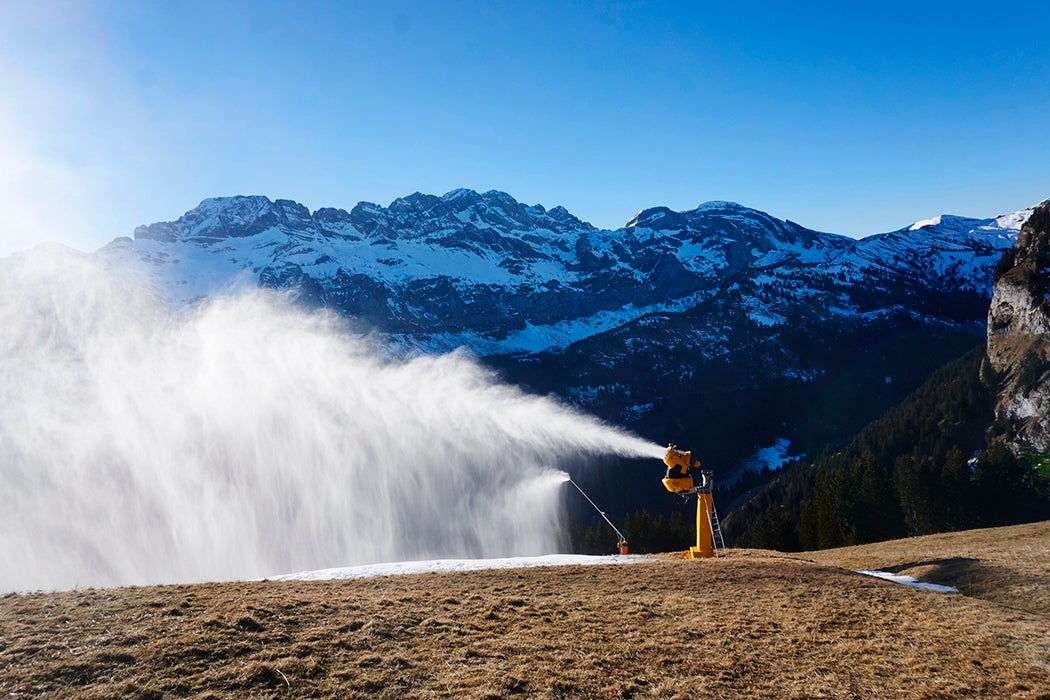As the climate changes, snowfall in many areas has decreased. For the ski industry, that means greater and greater reliance on artificial snow. Many of the skiing events at the 2018 Winter Olympics in Pyeongchang took place on artificial snow. As natural snow is replaced with artificial snow, what is the environmental impact?
The first consideration is the resource cost. Having to create snow increases a resort’s expenses, limiting profitability. Warmer weather means reduced snowmaking efficiency, so a greater number of snow cannons will be required to make the same amount of snow. A study from the Australian Alps determined that the efficiency drop is especially true at lower altitude resorts where a warming climate will be felt first. More snow cannons means more water pipes, compressors, and other infrastructure necessary to operate them. Snow cannons and their support equipment run on electricity; unless this electricity is produced with clean fuel, the increased greenhouse gas production may further exacerbate climate change.
An even bigger concern is the water required. Some can be saved by capturing runoff and reusing water, but even so the water requirements are enormous. The Australian Alps study calculates that to maintain adequate snow cover for low-elevation resorts under a moderate temperature increase, more water will be required per month than is needed for the entire city of Canberra, Australia’s capital.
Ecologically speaking, ski resorts have always had a troubled reputation. Clearing land for trails, for example, disturbs natural habitat. When it comes to making snow, the extra equipment required to keep up with climate change will necessarily increase disturbance to terrestrial habitats near ski runs. Other than that, the ecological impacts are tough to quantify. One study from Switzerland found that artificial snow is icier and provides thicker snow cover than natural snow. The thicker snowpack delayed melting and kept vegetation under snow well into the growing season. Natural snow, however, didn’t fare much better. Compacted on the ski run, the soil froze more deeply under artificial snow than it did under the natural snow cover off the trail. Tampering with soil temperatures, whether too hot or too cold, can have an impact on the growth of vegetation, though the most significant issue is the trail itself.
Weekly Newsletter
Perhaps more importantly for the ski resorts themselves, the Australian Alps study predicts that many resorts will not be able to afford the additional cost of the needed snowmaking and their operations will no longer be financially viable. Resorts will either need to develop a summer-based business model or close. The cost of climate change will be measured not just in environmental damage but in dollars.







